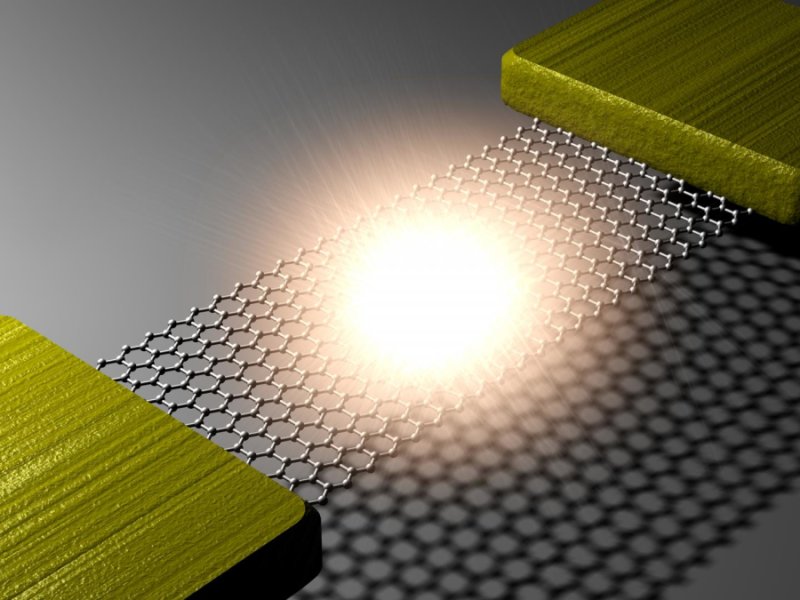Scientists made graphene glow

For the first time, scientists demonstrated a working light source based on graphene, which acts as a filament. Small graphene particles attached to metal electrodes glow when an electric current passes through them. Researchers from Columbia University, Seoul State University and the Korea Research Institute collaborated on the project.
“We essentially created the world's thinnest light bulb,” says Jame Hawn, co-author of the work. “Such a light source can be integrated into chips, and it will pave the way for the manufacture of flexible and transparent displays of atomic thickness, as well as optical communication systems.”
One of the key tasks in creating photonic circuits for optical computersis the creation of microscopic light sources. The incandescent lamp could not be integrated into the microchip, since it usually requires high temperatures for its luminescence, which microcircuits cannot withstand.
Glowing graphene reached, according to measurements of the spectrum of light, a temperature of 2500 degrees. Moreover, light from the structure of atomic thickness was visible even to the naked eye. But the uniqueness of graphene is that with increasing temperature, its thermal conductivity decreases. Due to this, it can be heated to glow, without damaging adjacent microcomponents.
Several peaks were observed in the spectrogram of the emitted light - this was due to the fact that graphene was transparent, and the light emitted toward the substrate was reflected from it, passed through graphene, and interfered with the light that was emitted in the other direction. This effect will allow us to adjust the radiation spectrum by adjusting the distance between graphene and the substrate.
One of the authors of the work noted that they use practically the same material with which Edison began the experiments on luminosity. Initially, he tried to use a carbon electrode for the filament. Graphene is the same carbon, only of atomic thickness.
Next, scientists plan to develop a technology for applying such a graphene light source on flexible substrates - a direction leading to the creation of a new generation of flexible displays. They will also study the possibilities of quickly turning on and off the glow to assess the potential for using this effect as a means of transmitting information.
